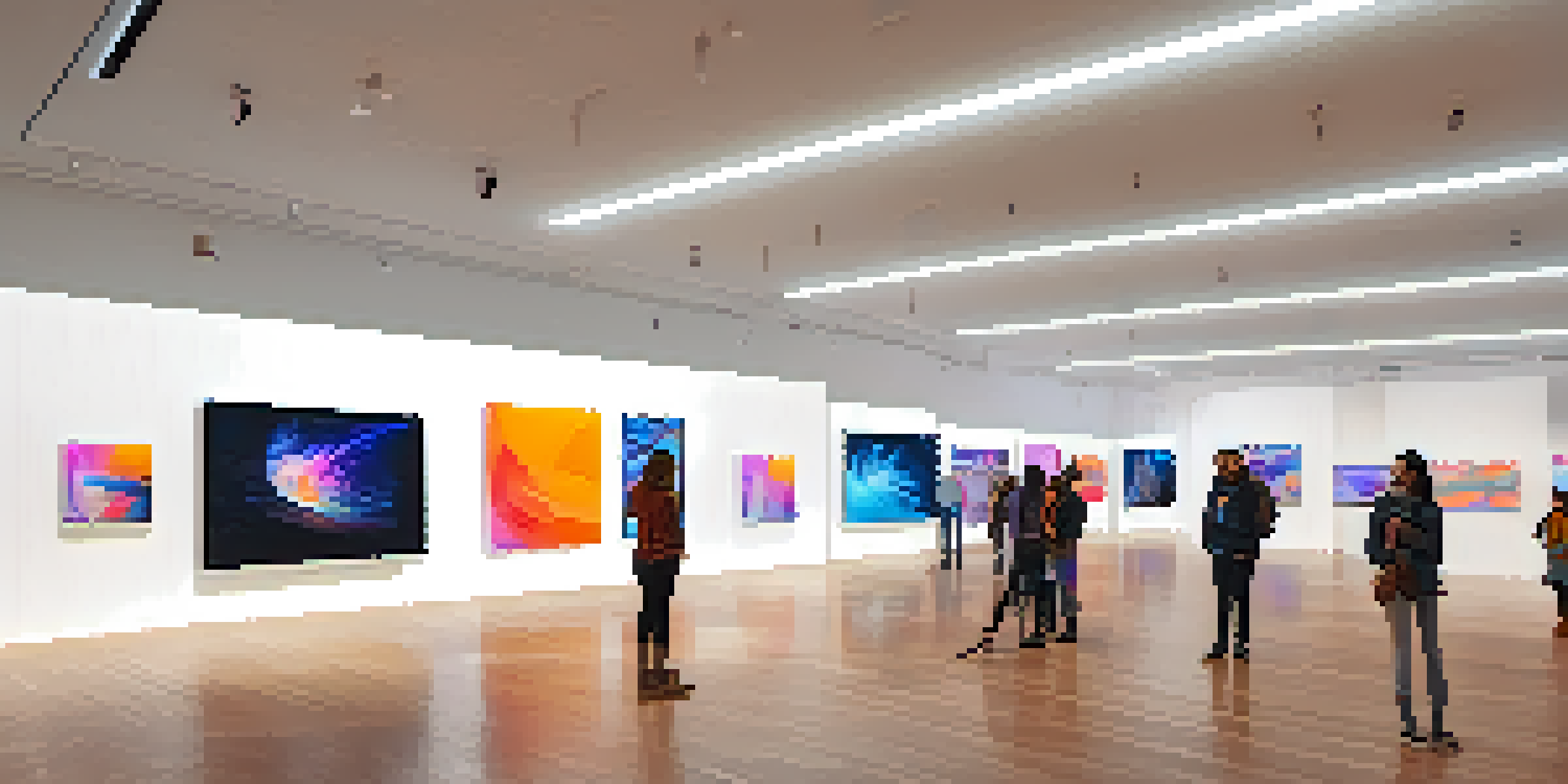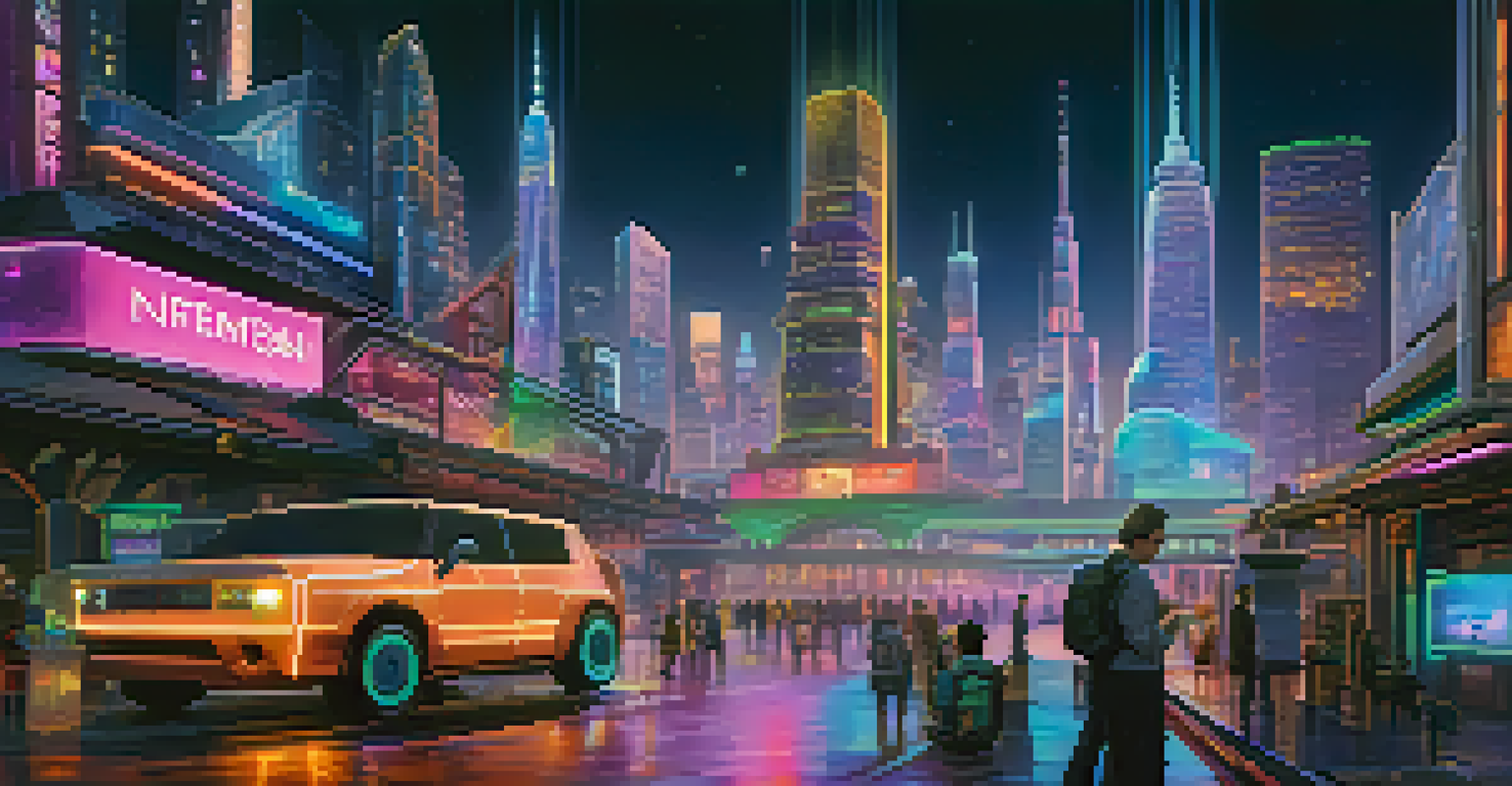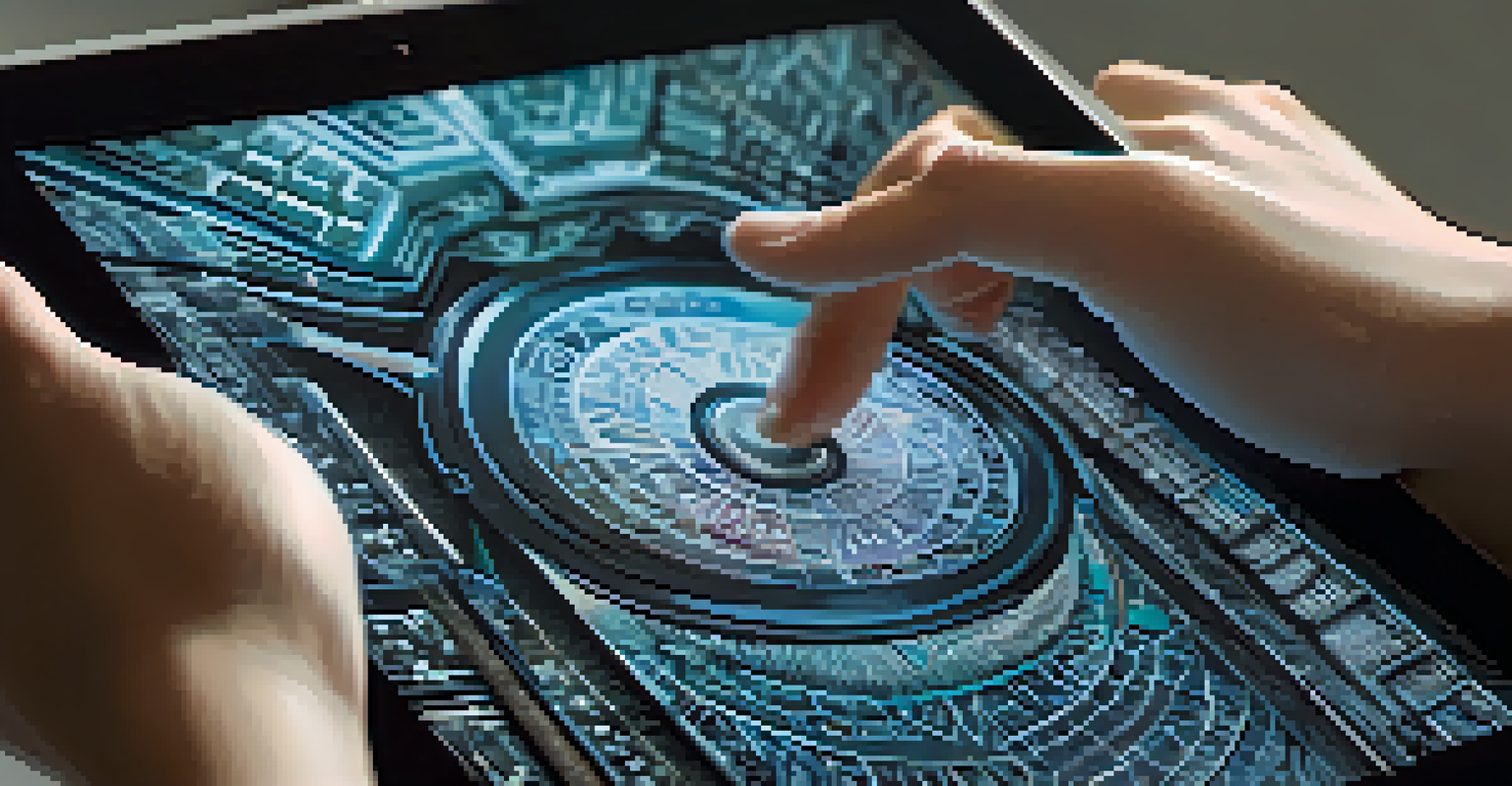NFTs and Digital Collectibles: The Future of Ownership

Understanding NFTs: The Basics of Digital Ownership
NFTs, or Non-Fungible Tokens, are unique digital assets verified using blockchain technology. Unlike traditional currencies or cryptocurrencies like Bitcoin, which are interchangeable, NFTs represent ownership of specific items, whether they be digital art, music, or even virtual real estate.
NFTs are a fundamental shift in our relationship with digital ownership, allowing us to claim unique assets in an increasingly digital world.
This uniqueness is what makes NFTs so appealing. Imagine owning a one-of-a-kind piece of digital art that no one else can replicate; that's the power of being able to prove ownership through these tokens. It's like having an original painting in the digital world.
As more creators and collectors enter the NFT space, understanding how they work becomes crucial. The blockchain ensures authenticity and scarcity, which are essential in determining the value of digital collectibles.
The Rise of Digital Collectibles: From Art to Gaming
Digital collectibles have taken the world by storm, with NFTs leading the charge. From unique pieces of art to virtual trading cards, these digital items have created a new market where ownership is not only verified but also celebrated.

For example, platforms like NBA Top Shot allow fans to buy, sell, and trade officially licensed video highlights, turning moments from basketball games into collectible assets. This brings a whole new level of engagement for fans, merging sports with digital ownership.
NFTs: Unique Digital Ownership
NFTs provide a way to own unique digital assets, verified through blockchain technology, distinguishing them from interchangeable currencies.
Gaming is another area where digital collectibles are flourishing. Players can now own in-game items, skins, or characters as NFTs, providing them with true ownership and the possibility of trading these assets with others outside of the game environment.
The Environmental Concerns of NFTs: A Double-Edged Sword
While NFTs offer exciting opportunities, they also raise environmental concerns. The process of minting NFTs, particularly on certain blockchains, can be energy-intensive, leading to a significant carbon footprint.
The blockchain does not just enable ownership of digital assets; it enables the very concept of scarcity in the digital realm.
This has sparked debates within the community about sustainability. Creators and collectors are becoming more aware of these issues, prompting discussions on how to minimize ecological impact while still enjoying the benefits of NFTs.
Innovative solutions are emerging, such as using more energy-efficient blockchains or carbon offset initiatives. This shift could help preserve the appeal of NFTs without compromising our planet's health.
NFTs and Intellectual Property: Navigating Ownership Rights
As the NFT market grows, so does the complexity of intellectual property rights. When someone buys an NFT, they often acquire ownership of the digital asset but not necessarily the copyright to the underlying work.
This distinction can lead to confusion. For instance, if you purchase a digital artwork NFT, you may own the token, but the original artist still retains the rights to reproduce or sell their artwork elsewhere.
Environmental Impact of NFTs
While NFTs offer exciting opportunities, their creation can be energy-intensive, prompting discussions on sustainability and ecological responsibility.
Understanding these legal nuances is crucial for both creators and collectors to ensure they are fully aware of what they are buying or selling, helping to foster a more transparent marketplace.
NFT Marketplaces: Where to Buy and Sell Digital Collectibles
Several marketplaces have emerged as hubs for buying and selling NFTs. Platforms like OpenSea, Rarible, and Foundation provide a space for artists and collectors to connect and trade their digital collectibles.
These marketplaces have user-friendly interfaces, making it easier for newcomers to navigate the world of NFTs. You can browse through various categories, discover new artists, and even participate in auctions for rare items.
However, it's essential to conduct research before diving in. Understanding the fees, transaction processes, and community dynamics of each platform can enhance your experience and help you make informed decisions.
The Future of NFTs: Trends to Watch in Digital Ownership
Looking ahead, the future of NFTs is filled with potential. As technology evolves, we can expect to see more innovative uses of NFTs in various sectors, including entertainment, fashion, and even real estate.
For example, brands are exploring how NFTs could serve as digital certificates of authenticity for luxury goods, ensuring buyers that they are purchasing genuine items. This could revolutionize the way we think about ownership and authenticity in the digital age.
Navigating NFT Ownership Rights
Purchasing an NFT often grants ownership of the digital asset but does not necessarily include copyright, highlighting the need for clarity in intellectual property rights.
Moreover, as the legal landscape around NFTs continues to develop, clearer regulations and guidelines will likely emerge, fostering a safer and more credible environment for both buyers and sellers.
Conclusion: Embracing the Digital Ownership Revolution
In conclusion, NFTs and digital collectibles are reshaping our understanding of ownership in the digital age. They offer unique opportunities for creators and collectors alike, allowing for new forms of expression and engagement.
While there are challenges to address, such as environmental impact and intellectual property rights, the potential for innovation and growth in this space is undeniable. Embracing this digital ownership revolution could lead to exciting possibilities in the future.

As we continue to explore the world of NFTs, it's essential to stay informed, engage with the community, and approach this new frontier with curiosity and an open mind.